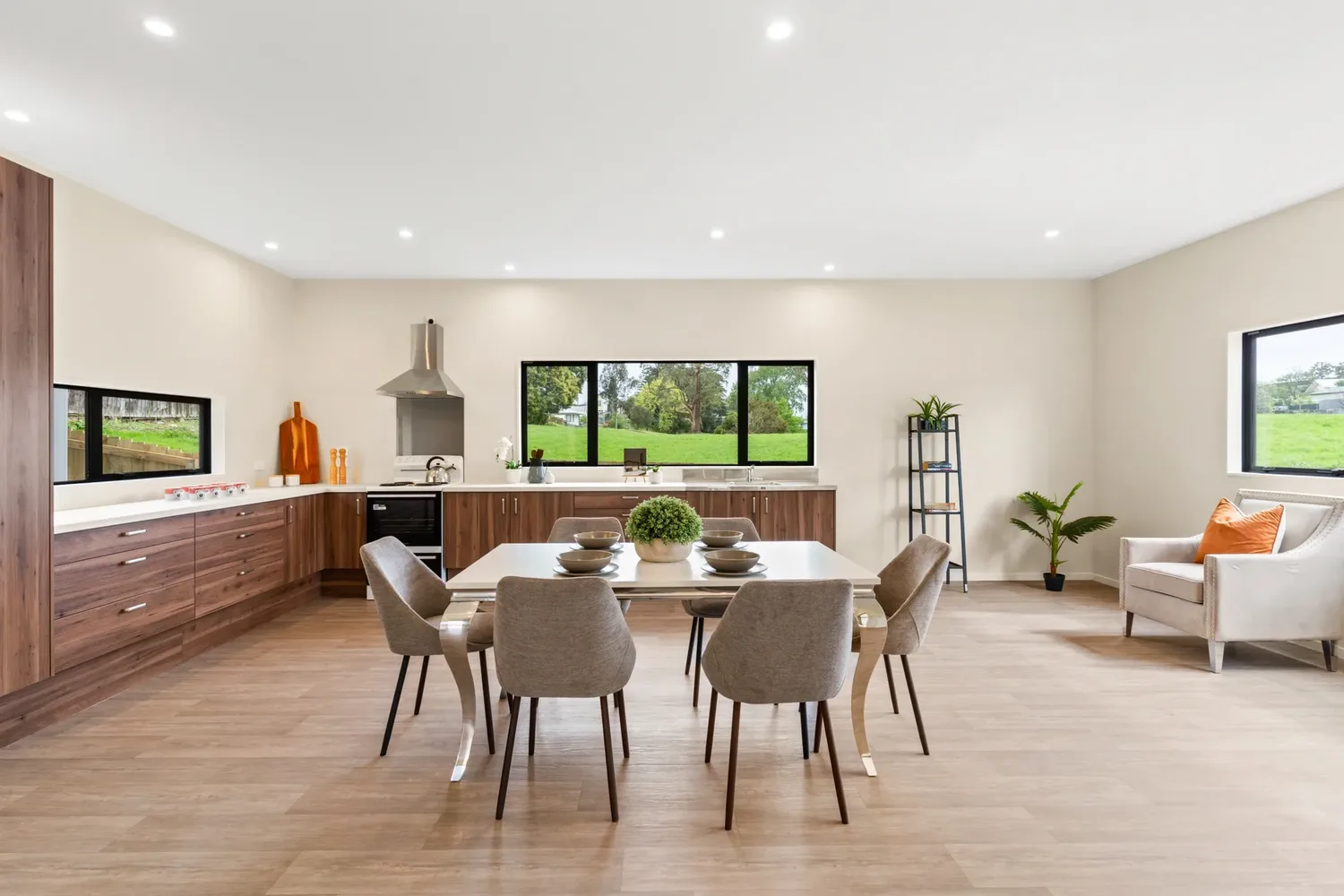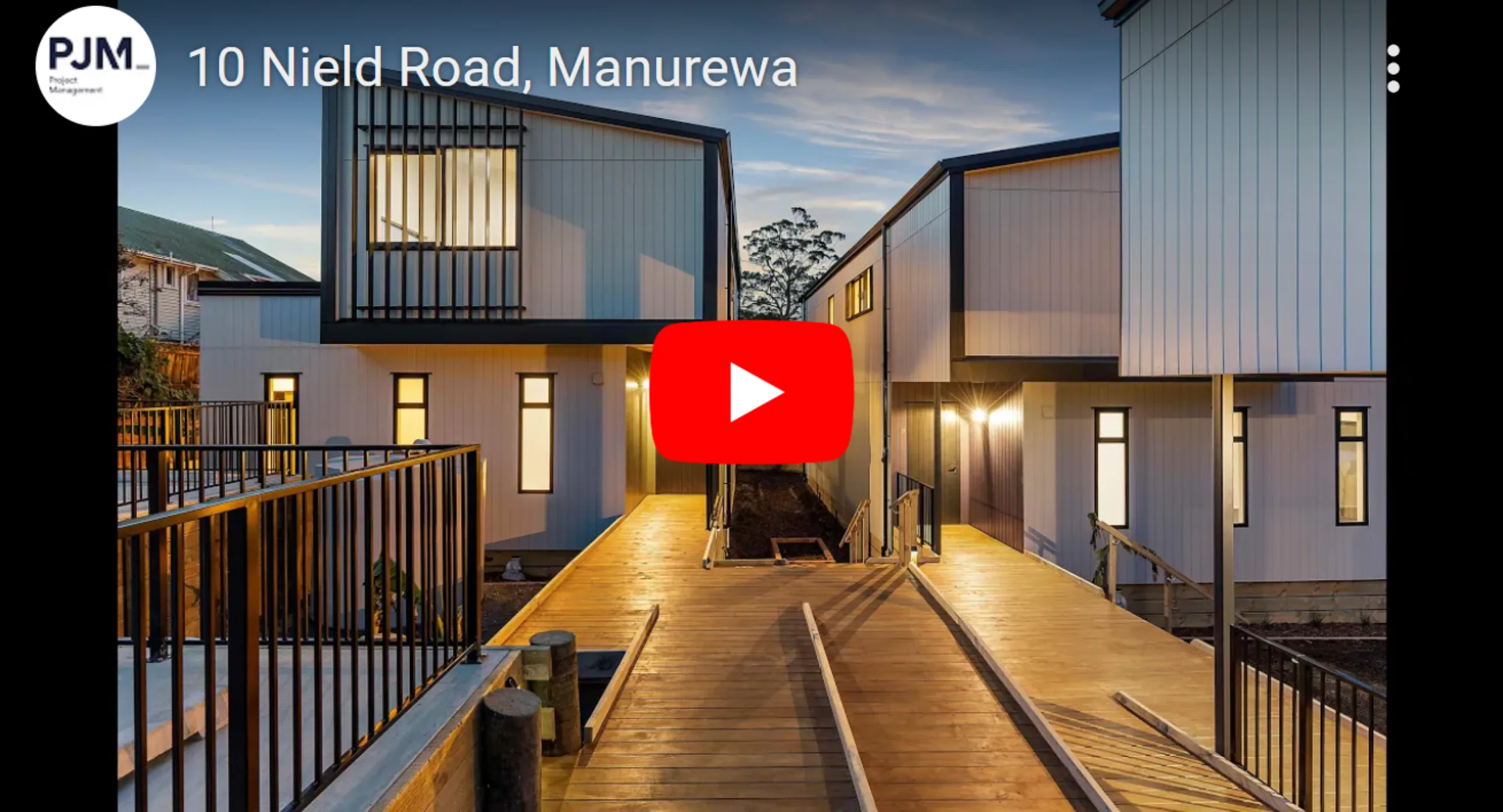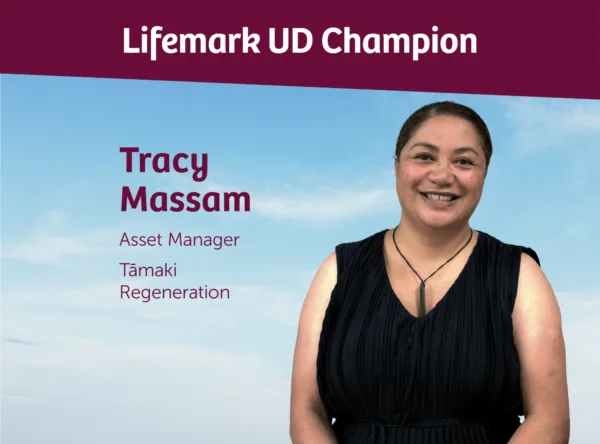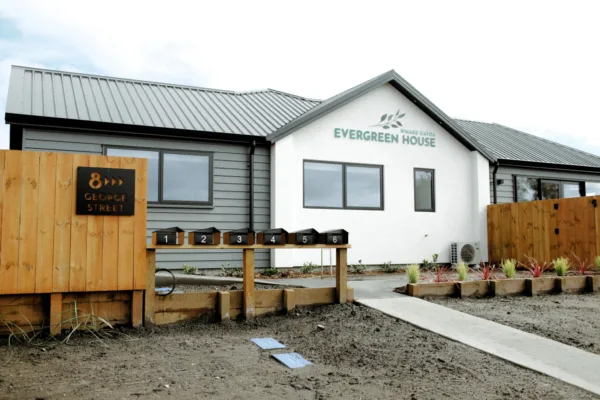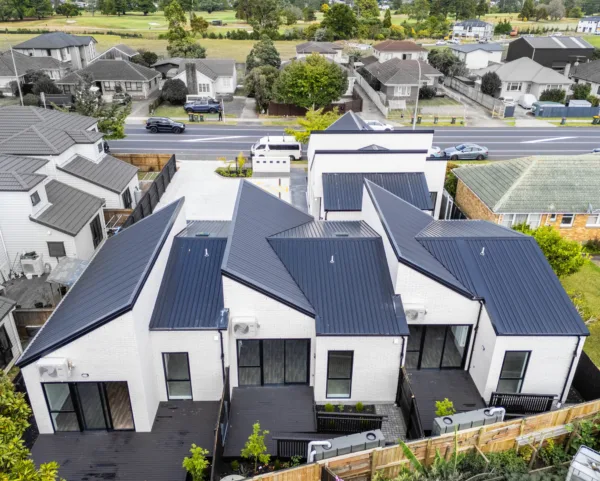Project Pacific: Putting the “Community” in Community Housing
Project Pacific: Putting the “Community” in Community Housing
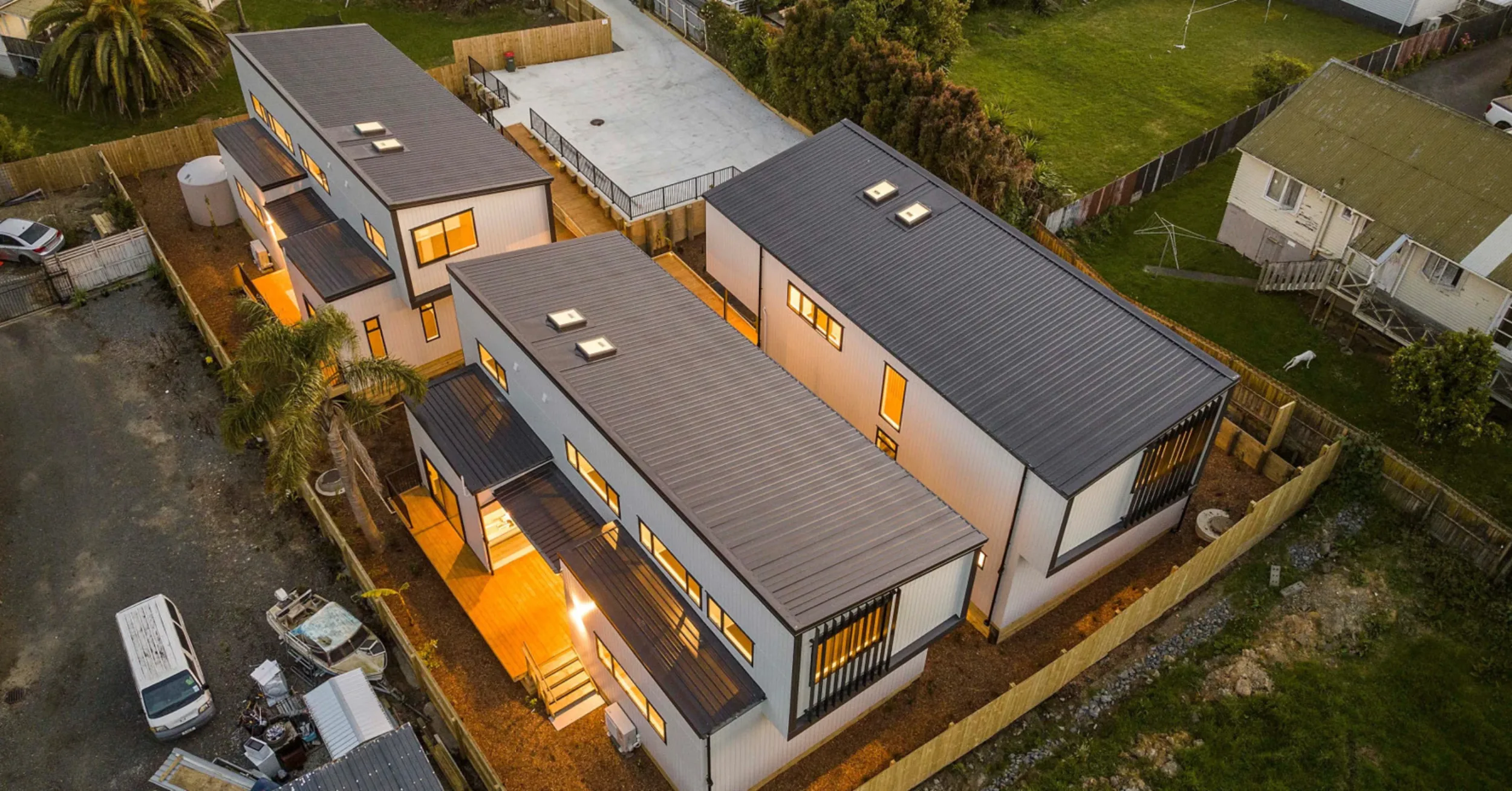
Through her groundbreaking South Auckland development, Project Pacific, developer Kirsty Merriman is raising the bar for social housing and redefining what community living looks like. The three spacious homes share a common outdoor area and will be tenanted by clients of the South Auckland Pacific community wellness organisation, Penina Trust.
Having received both Homestar 7 and Lifemark 5-Star ratings, this project combines efficiency and minimal environmental impact with Universal Design to create housing that is sustainable for both people and the climate.
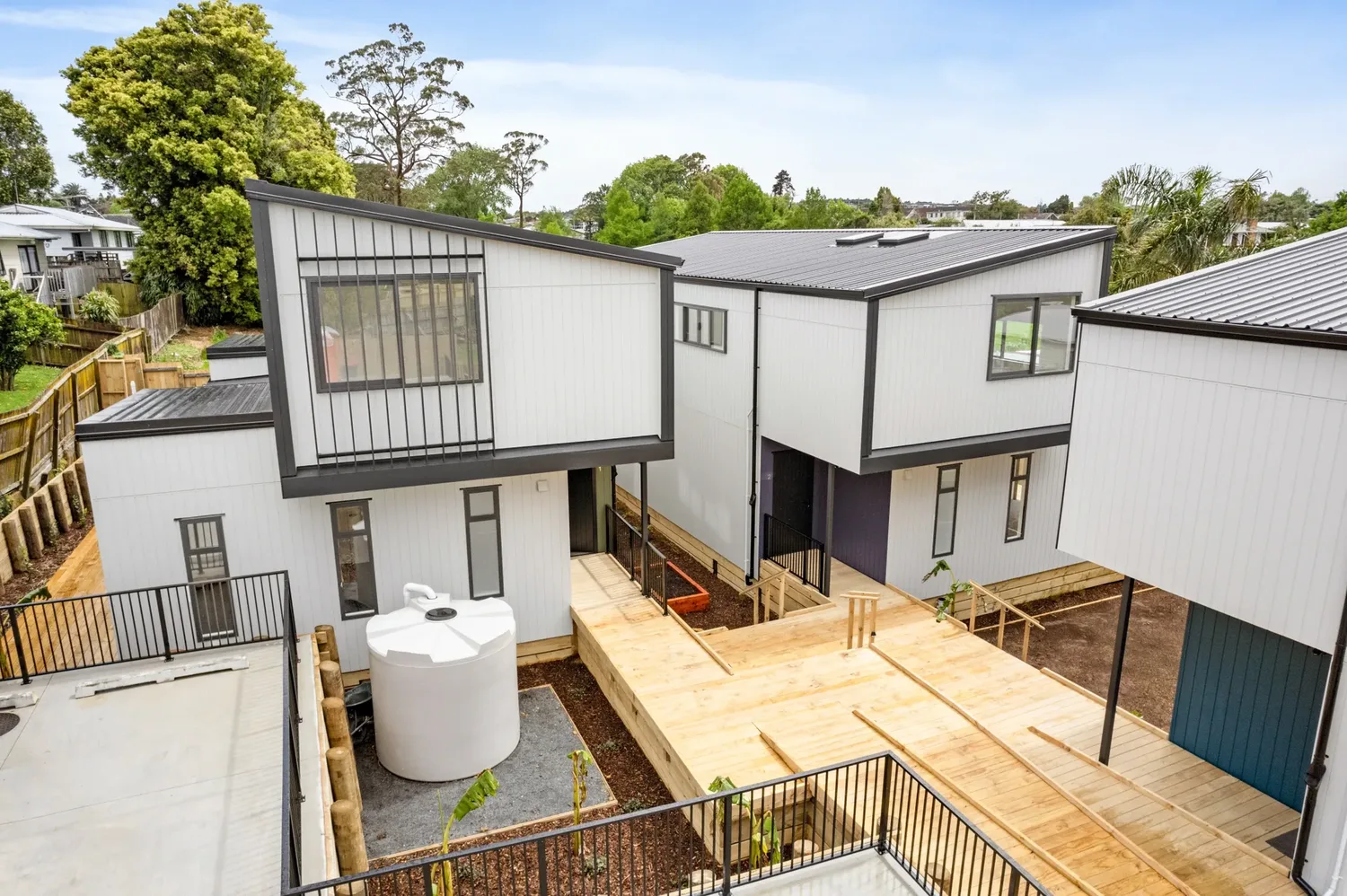
Filling a Need First
Kirsty Merriman is a big believer that business should be driven by market need. The inspiration for Project Pacific came during the pandemic when there were calls for better solutions to social housing. Merriman came across several news articles and reports on intergenerational housing and realised that there were few options for large families or people with access needs.
Project Pacific is her solution, with each of the large homes offering five bedrooms, three bathrooms, ample storage, an open living space and full accessibility features.
“Everybody is just slamming up terraced houses without thinking about the market. But from a business perspective, why not address what we actually need?” says Merriman. “Good business is about service – you serve the community first. It’s not about making money. You make money as a byproduct of service.”
In It Together
One of the most unique features of Project Pacific is the way it facilitates a micro-community through the interconnecting decking, access ramp and outdoor spaces, which create touchpoints for people to meet and connect throughout the day.
Merriman is no stranger to community living herself, having spent 15 years as an expatriate in Asia and the Middle East. She was inspired by the housing compounds that are common in these regions and the positive impact she saw on people’s quality of life as a result.
Now living in one of the other micro-communities she developed previously, she has first-hand experience of the advantages of this lifestyle.
“Many people don’t have families close by so they’re dependent on one another. If your car has broken down, your kid gets lost or your cat needs feeding while you’re away, you have someone to turn to,” says Merriman. “In the past, our communities might have come from the church or the other families at school, but people live differently now and we’ve lost that interconnectedness.”
“COVID showed us that if you want to get through hard times, you have to do it together. The truth is that none of us are alone, whether that is with the animals, the climate, viruses or our fellow human beings, we’re all part of a system.”
This ethos of collaboration extended to the build process itself, with Merriman stating that having the right people to support the project was essential to its success.
“It was a really challenging year for building. We still had COVID legacy issues, industry challenges and the weather events on top of that. I think the only way to survive was by delivering to the market need and having a dedicated team of experts that worked well together,” she says.
“Working with Lifemark again has been fantastic, they’re so supportive. The Lifemark team feel like they’re there to make it work for you. If you’ve got a problem, you contact them and they’re beside you.”
Building Responsibly
Project Pacific is a poster child for sustainability in all its forms, built to meet the needs of tenants through each stage of their lives as well as to be healthy, efficient and better for the environment. All three homes have been awarded Lifemark’s 5-Star rating for full accessibility along with Homestar 7, something that Merriman is very proud of.
“What I love about Lifemark’s standards is that it’s all about how people live and move. You’re not only building a home for disabled people, you’re building something that suits everyone,” she says.
“I would love to live in these homes myself because the doorways are wider, I’m not slipping over, everything’s easier to get to. If I had to move large items such as a new refrigerator, the ramp makes that easier. Lifemark is about thinking of the design from the perspective of those living in it.”
For Merriman, marrying this with the Homestar standards was a natural fit, allowing her to take a holistic approach to the design.
“It’s about the whole interaction between the person, their home and the environment,” she explains. “Do you have access to schools and public transport? Do you have the right plantings for birds and insects? What’s your water and energy consumption like?”
“You put all this together and you’ve got the kind of homes that have been built responsibly. My philosophy is responsibility.”
The project has been well received since its completion, and seeing the homes being enjoyed as they were intended is the ultimate source of satisfaction for Merriman.
“I was on the site recently and speaking to an older woman who lives there. She used the downstairs because it was fully accessible for her, and her adult children were living upstairs. I could tell she was happy and was looking after the place really well. It was fantastic to see.” she says.
“The reward is when you know you have succeeded in delivering that need!”
